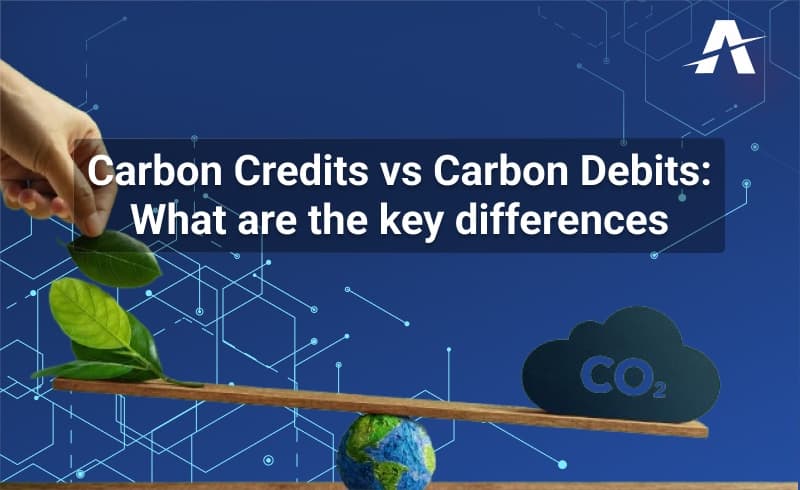In the fight against climate change, the terms "carbon credits" and "carbon debits" are frequently tossed around, but their meanings and implications can be confusing. Understanding the difference between these two concepts is crucial for navigating the world of carbon neutrality and sustainable practices.
What are Carbon Credits?
Imagine carbon credits like a green currency. Each credit represents one ton of carbon dioxide or equivalent greenhouse gas emissions that have been avoided or removed from the atmosphere. These credits are generated through projects like renewable energy, deforestation prevention, and carbon capture and storage. Companies and individuals can buy and trade carbon credits to offset their own emissions, aiming to achieve a net-zero carbon footprint.
Think of it as:
- A reward for good: Carbon credits incentivize green projects and provide financial backing for sustainable solutions.
- A tool for offsetting:Companies can use credits to compensate for their unavoidable emissions and claim carbon neutrality.
The two main types of carbon credits can be categorized based on the market they're traded in:
- Compliance Carbon Credits:
- These credits are generated and traded under mandatory cap-and-trade programs implemented by governments or regulatory bodies.
- Companies operating in regulated industries are required to hold a certain number of credits to cover their emissions. They can buy and sell credits on a secondary market to comply with regulations.
- Examples include the EU Emissions Trading System (EU ETS) and the Regional Greenhouse Gas Initiative (RGGI) in the US.
- Voluntary Carbon Credits:
- These credits are generated and traded in voluntary markets, outside of any regulatory framework. Individuals and companies can purchase credits from green projects like renewable energy, forestry, or carbon capture and storage to offset their own emissions and achieve carbon neutrality goals.
- The voluntary market offers a wider range of project types and credit standards compared to compliance markets.
- Examples include the Verified Carbon Standard (VCS) and the Gold Standard.
What are Carbon Debits?
Carbon debits, on the other hand, are the opposite of credits. They represent a debt accrued for emitting greenhouse gases, essentially acknowledging the environmental cost of our actions. While not currently a formal accounting system, the concept of carbon debits is gaining traction as a way to hold polluters accountable and encourage emissions reduction.
Think of it as:
- A reminder of responsibility:Carbon debits highlight the negative impact of our choices and the need for accountability.
- A driver for change:By quantifying the environmental cost, debits can incentivize businesses and individuals to adopt cleaner practices.
- Accounting Carbon Debits:
- This type serves as a financial or reputational accounting mechanism to acknowledge and quantify the environmental cost of emissions.
- Unlike credits, debits wouldn't be traded or used for offsetting, but rather assigned to companies or individuals based on their emission levels.
- They could potentially factor into taxes, financial statements, or environmental performance evaluations.
- Cost-reflective Carbon Debits:
- This type aims to incentivize emissions reduction by directly imposing a financial cost on polluters based on their emission levels.
- Debits could be levied by governments on companies or individuals exceeding set emission limits.
- The revenue generated could then be reinvested in green initiatives or distributed as rebates to those with lower emissions.
The key difference:
- Credits focus on action:They incentivize reducing emissions and removing them from the atmosphere.
- Debits focus on accountability:They acknowledge the environmental impact of emissions and encourage responsible action.
The debate and the future:
While carbon credits offer a market-based solution, concerns exist about their effectiveness and potential for greenwashing. Carbon debits, while compelling in their accountability, raise questions about implementation and fairness.
The future of carbon accounting likely lies in a balanced approach, using both credits and debits to drive emissions reduction and hold polluters responsible. As the climate crisis intensifies, understanding these nuanced concepts will be critical for individuals and businesses to make informed choices and contribute to a sustainable future.
Note :
- Both credits and debits are tools in the fight against climate change, but they serve different purposes.
- Understanding the difference is crucial for making informed choices and supporting effective climate solutions.
- A balanced approach that incentivizes action and promotes accountability is essential for achieving a sustainable future.







